May Co. Building (Wilshire and Fairfax)
When it opened in 1939, the gleaming May Company Building was instantly heralded as the western gateway to the Miracle Mile, beckoning to motorists with an enormous gold-tiled cylinder at the NE corner of Fairfax Avenue and Wilshire Boulevard.
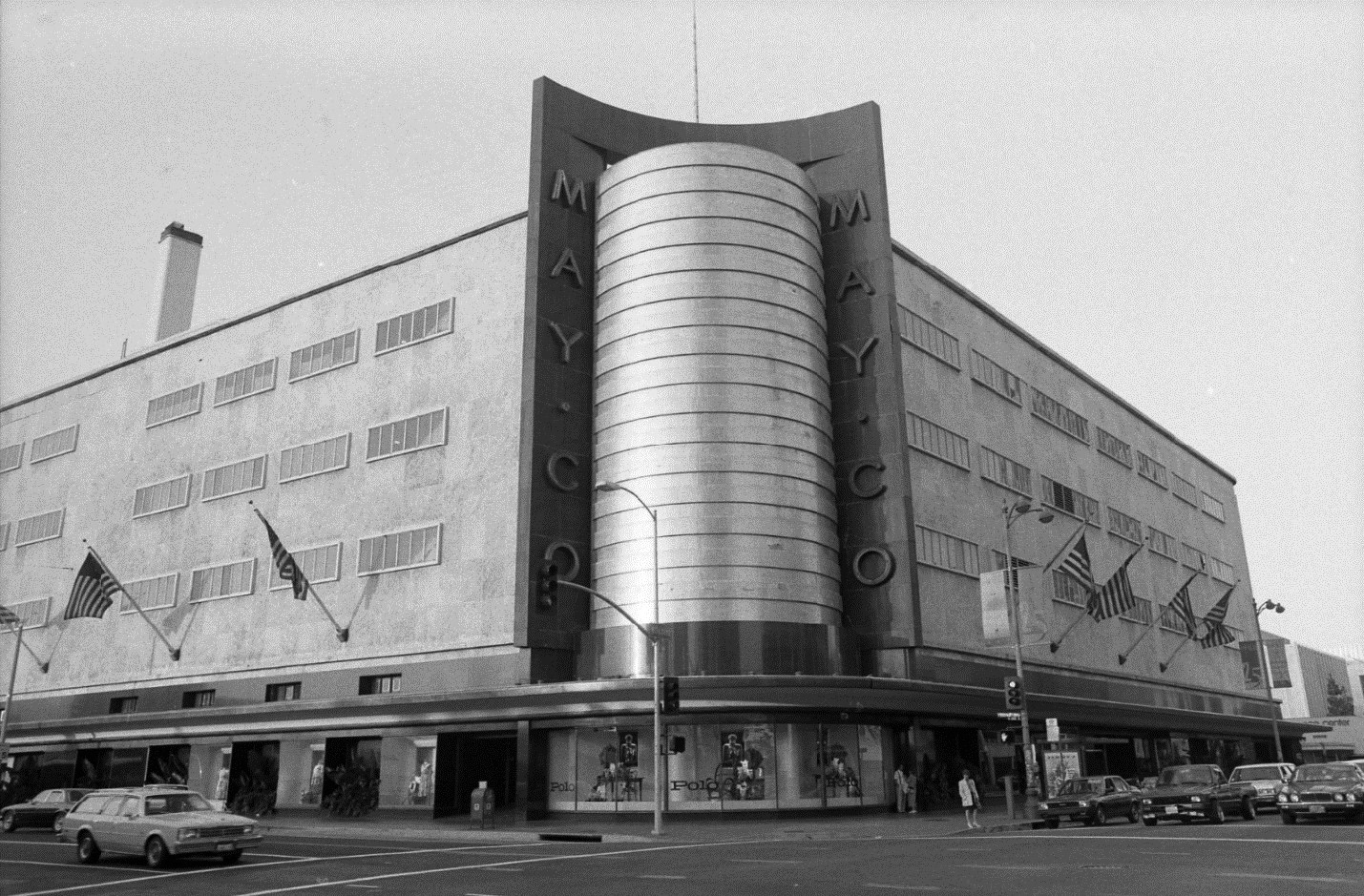 |
|
| (1990)^ - View showing the May Co. Department Store located at the NE corner of Fairfax and Wilshire Blvd. Photo by Lisa Romerein of the LA Times |
Historical Notes What was once the finest department store on the Miracle Mile is also the city's grandest remaining example of Streamline Moderne. |
Construction Begins
.jpg) |
|
| (1939)* – View looking East on Wilshire at Fairfax showing the May Co. Dept. Store under construction on the NE corner. Note the double decker bus on the right. A sign for Simon's Drive-in can be seen across the street on the NW corner. |
Historical Notes The new May Company Wilshire store was the company’s first new freestanding department store in Los Angeles and incorporated a rear parking lot. Albert C. Martin collaborated with Samuel A. Marx, The May Company’s architect, to design the Streamline Moderne style building. Martin also designed the Million Dollar Theatre, Los Angeles City Hall, the Department of Water and Power Building, and many more. |
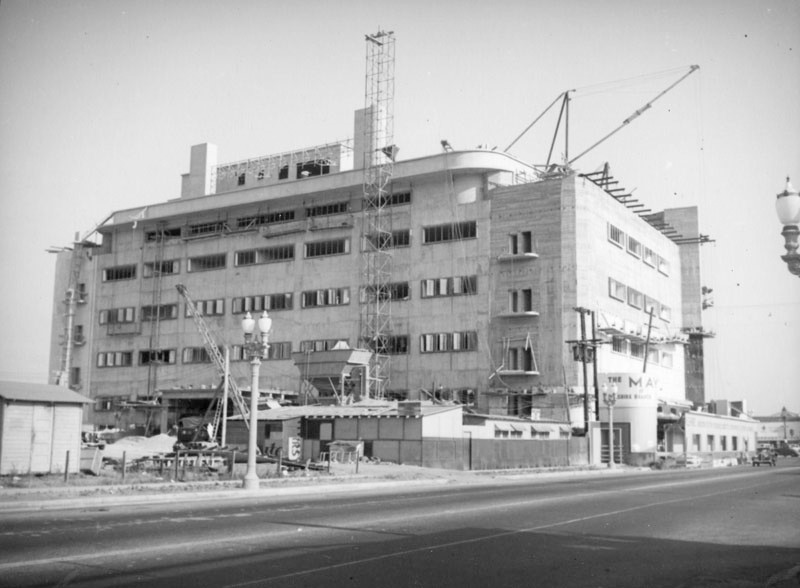 |
|
| (1939)* - View looking across Fairfax Avenue toward the northeast corner of Fairfax and Wilshire showing cranes and scaffolding surrounding the Wilshire May Company store still under construction. |
Historical Notes The founder of The May Company Department Stores (“The May Company”), David May, opened his first store in 1877 in Leadville, Colorado, and added branch stores in Aspen and Glenwood Springs, Colorado. May continued to expand in the 19th and early 20th centureis. The company was incorporated as The May Department Stores Company in 1910 in New York. The following year, the company bought William Barr Dry goods Company in St. Louis and merged that store with its other St. Louis store, forming the Famous-Barr Company. In 1923, May bought a Los Angeles department store, A. Hamburger & Sons, and renamed it The May Company. This was the first store in Los Angeles with the name The May Company. With the new downtown Los Angeles store, The May Company surpassed $100 million in sales by the mid-1920s. By the late 1920s, The May Company was focusing on consolidation, improvement in performance, and store remodeling. Knowing that transportation was changing the way consumers shopped, The May Company modernized delivery systems and began providing customer parking. The May Company remained successful through the Depression due in part to the geographic spread of its subsidiaries. Foreshadowing a 1940s trend toward suburban shopping centers, it built and opened the Wilshire Boulevard branch of its Los Angeles store in 1939, the first new store built from the ground up under The May Company name in Los Angeles and the United States.* |
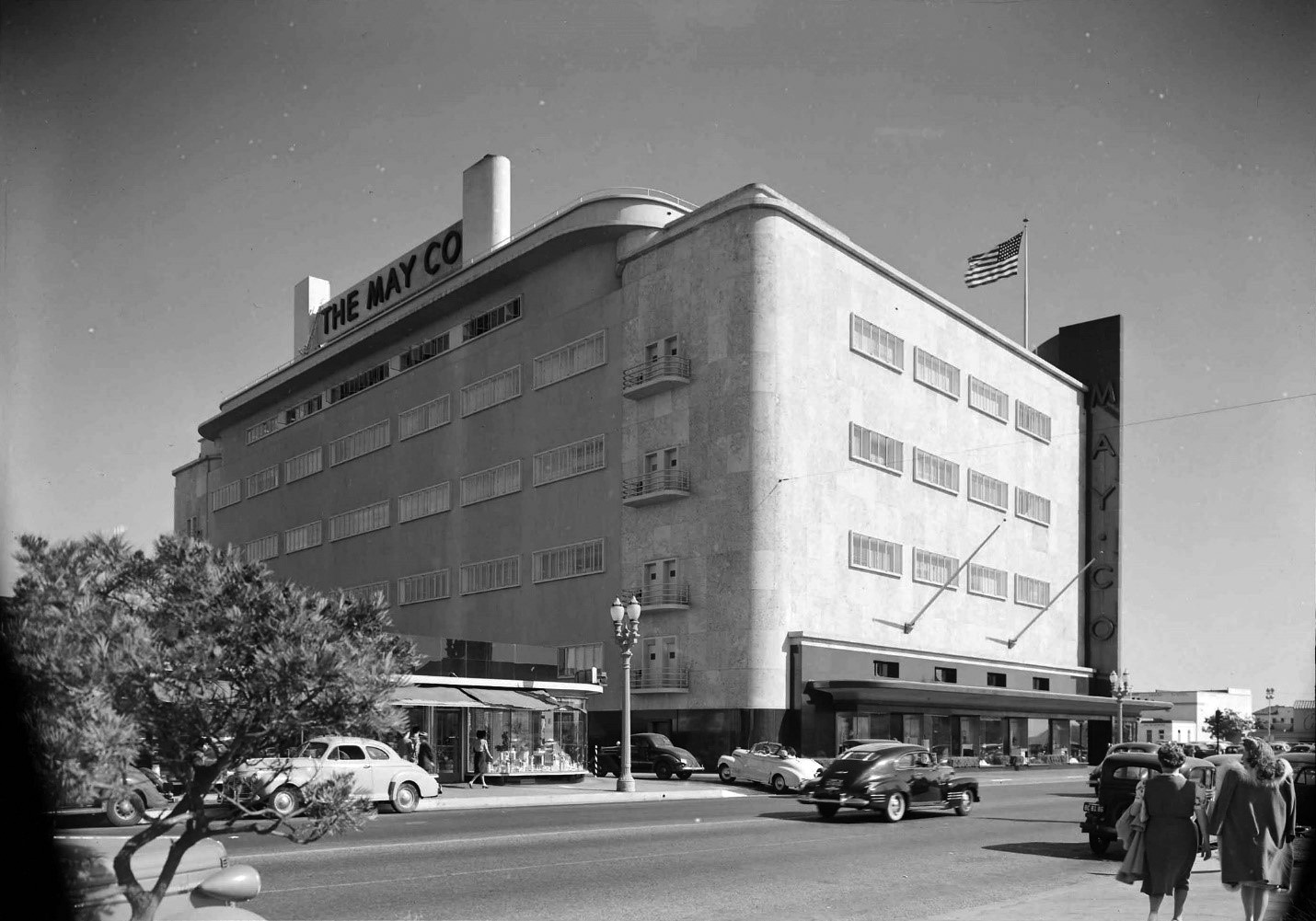 |
|
| (ca. 1940)* - View looking SE across Fairfax Avenue showing the May Co. Building shortly after it openend. Wilshire is to the right. Photo by Maynard L. Parker |
Historical Notes A five-story addition to the North (left) of the Original Building seen above would go up in 1946. The new addition was also designed by Architect Albert C. Martin. |
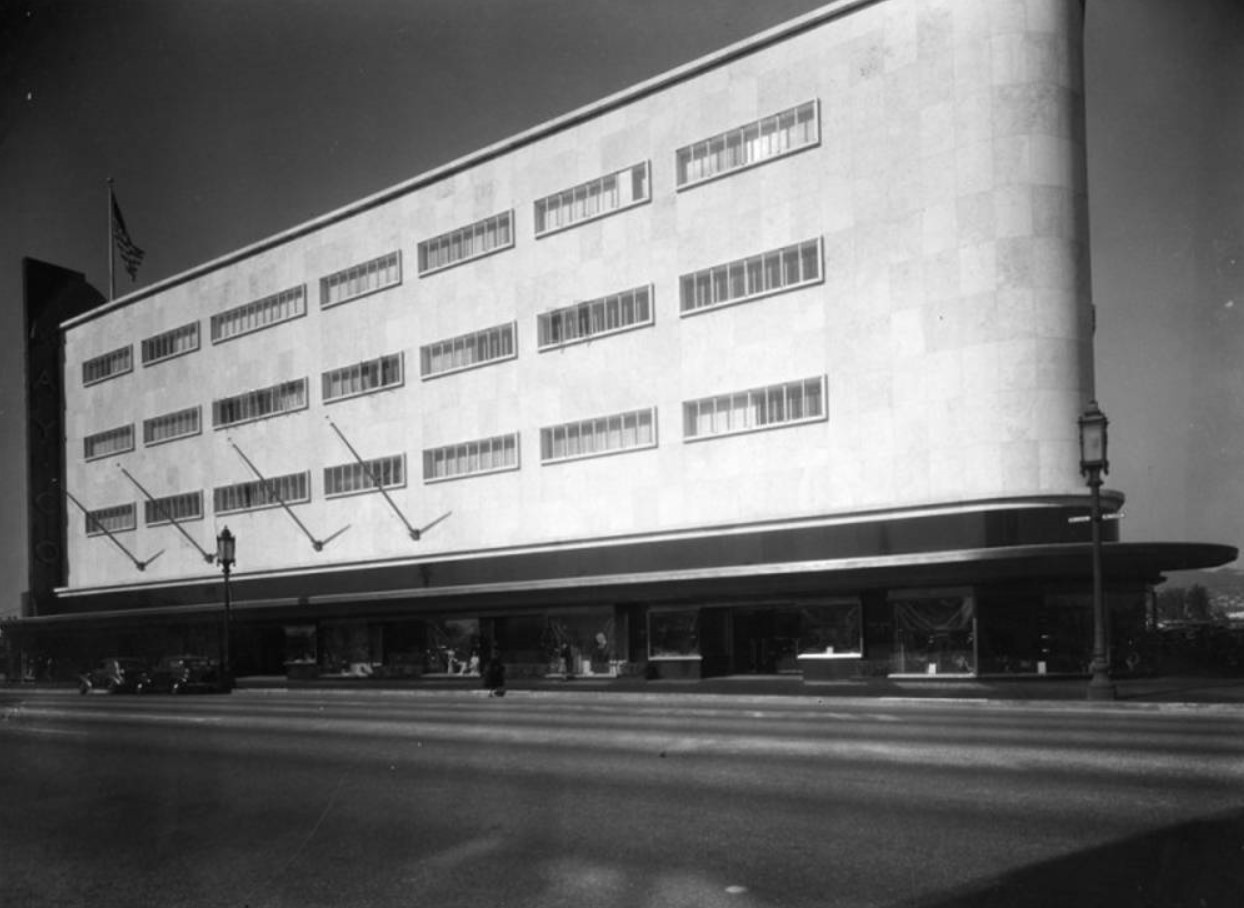 |
|
| (ca. 1940)* - Facade on the May Co. Department Store building, showing the side facing south onto Wilshire Blvd. This Streamline Moderne style department store was built in 1939-40 and designed by architect Albert C. Martin and associate architect Samuel A. Marx. |
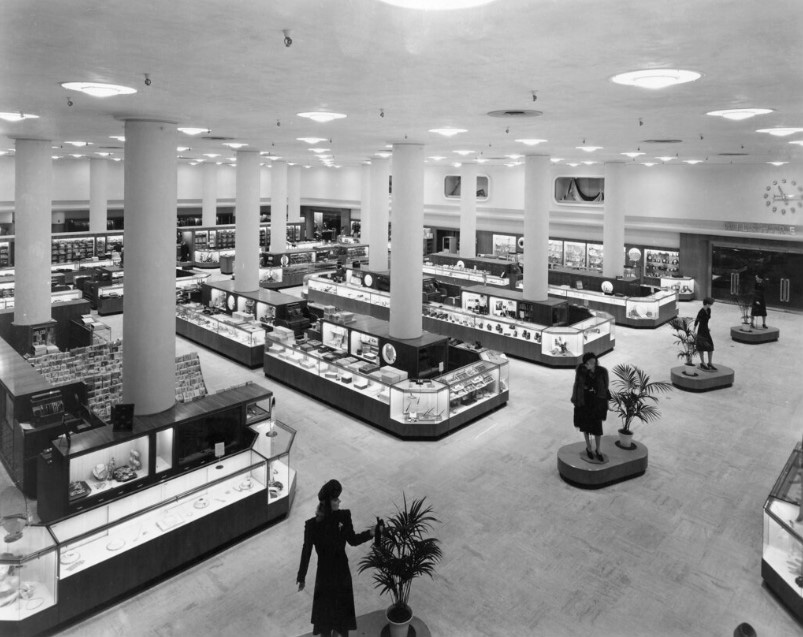 |
|
| (1939)^ – Interior view of May Company Wilshire before opening. |
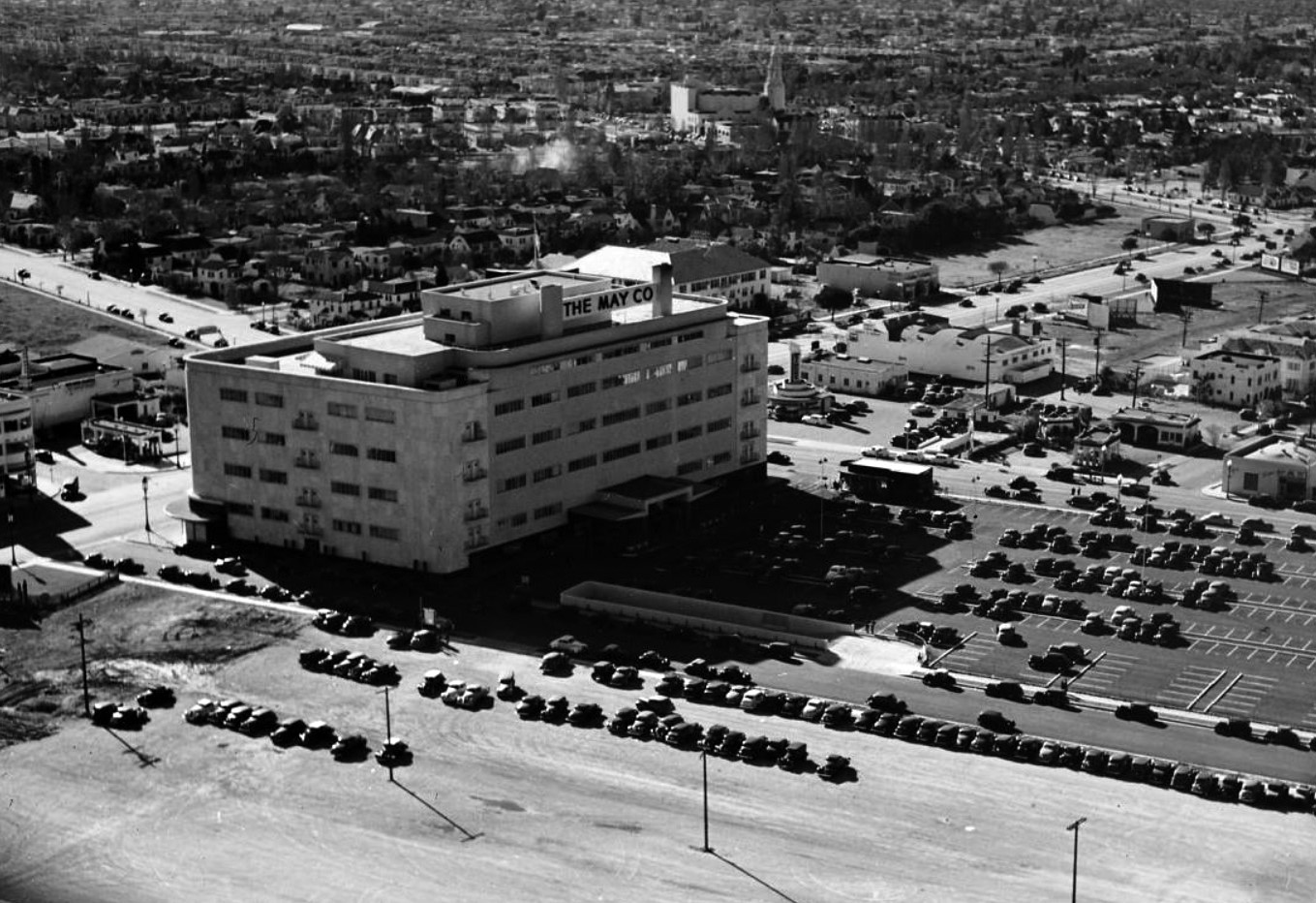 |
|
| (1940)^ - Aerial view, May Company Store, Wilshire Boulevard, just south of Park La Brea. In the background, at center the Carthay Circle Theatre is visible. |
Historical Notes The new May Company Wilshire store was the company’s first new freestanding department store in Los Angeles and incorporated a rear parking lot. |
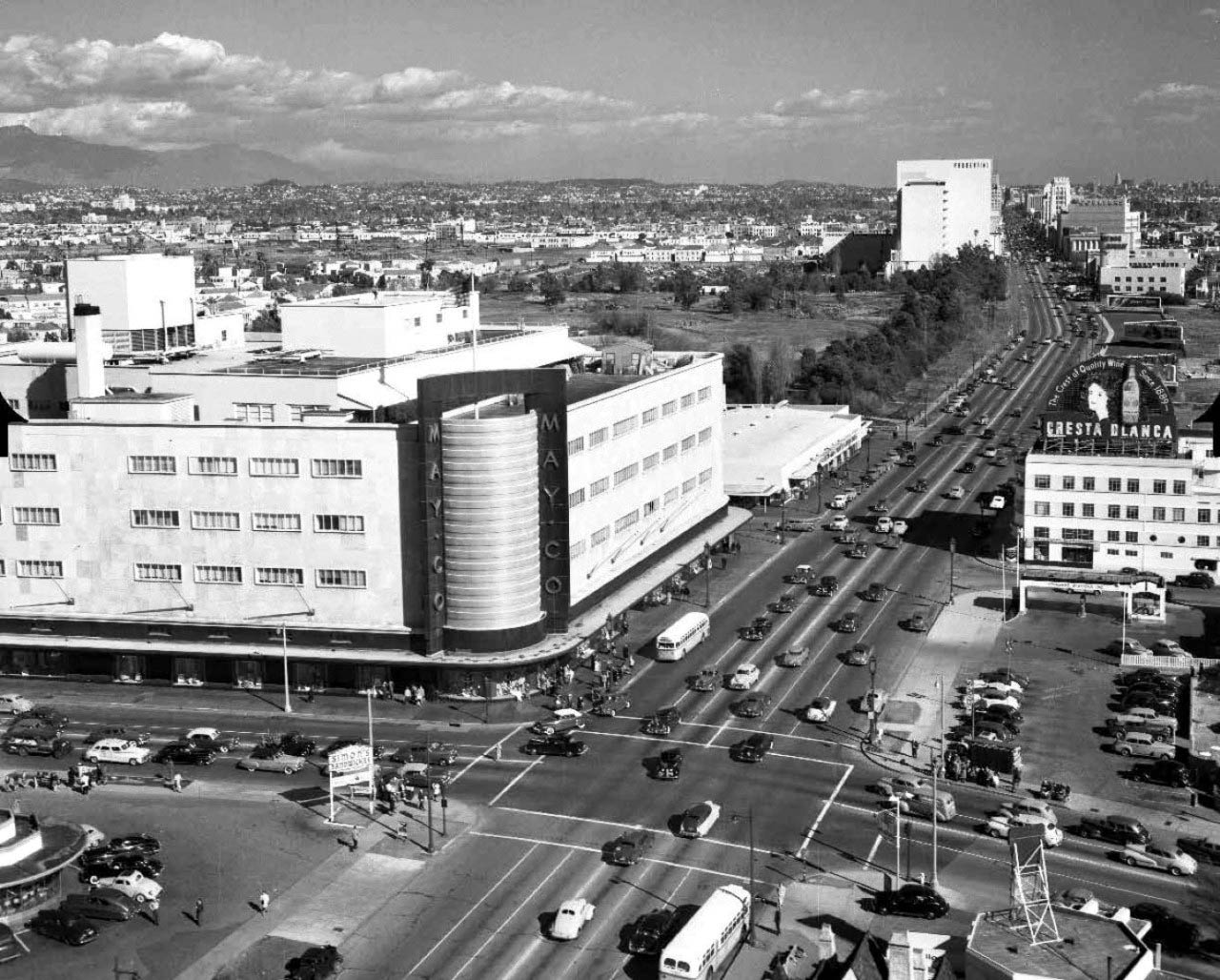 |
|
| (1940s)* – Aerial view of Wilshire Blvd facing east at Fairfax Ave, showing the May Company department store on the NE corner. Simon's Drive-in can be seen at lower-left on the NW corner. This intersection was, and still is, referred to as the western gateway to the Miracle Mile. Source: Bison Archives |
Historical Notes On the other side of Fairfax, in the bottom left corner of the photo, we can see the popular Simon's Drive-in restaurant which was later replaced by Johnie's Coffee Shop which originally opened in 1956 as Romeo’s Times Square and was recently declared a historical landmark. |
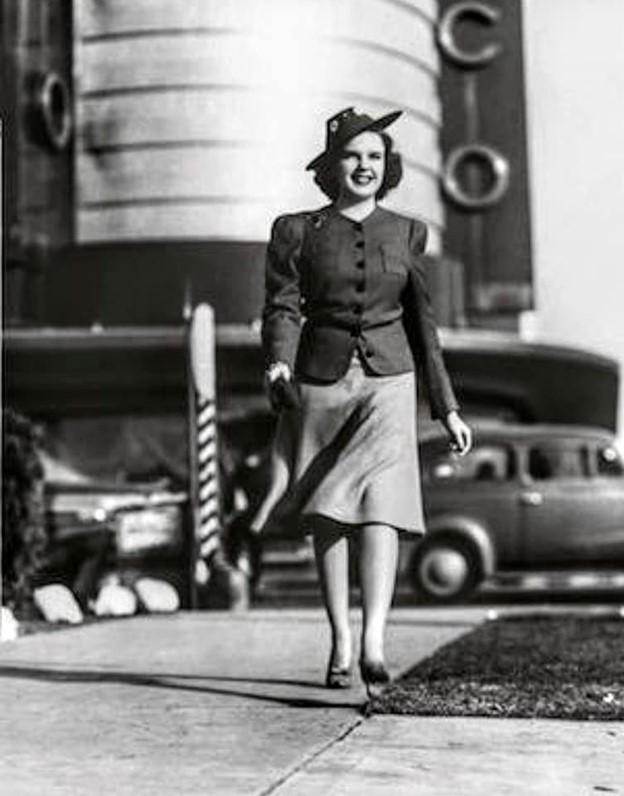 |
|
| (1940)* - Judy Garland on Wilshire Blvd just west of Fairfax with May Company department store seen in the background. |
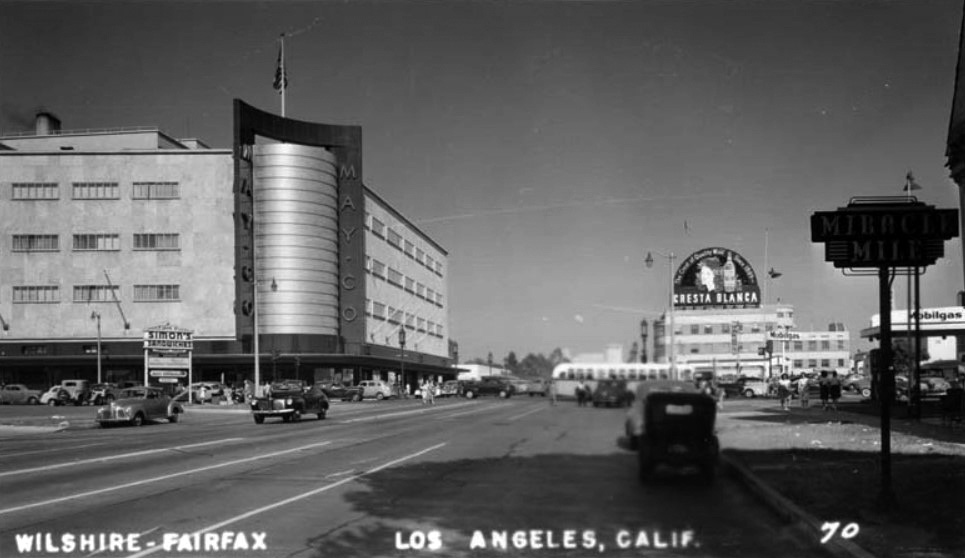 |
|
| (1940s)* – Postcard view looking East on Wilshire toward Fairfax with the May Co. store standing tall on the NE corner. A sign for "Miracle Mile" is seen at right; Mobilgas service station at right (SW corner); Simon’s Drive-in on the left (NW corner); also seen is an over-sized billboard advertising Cresta Blanka wine across from the May Co. |
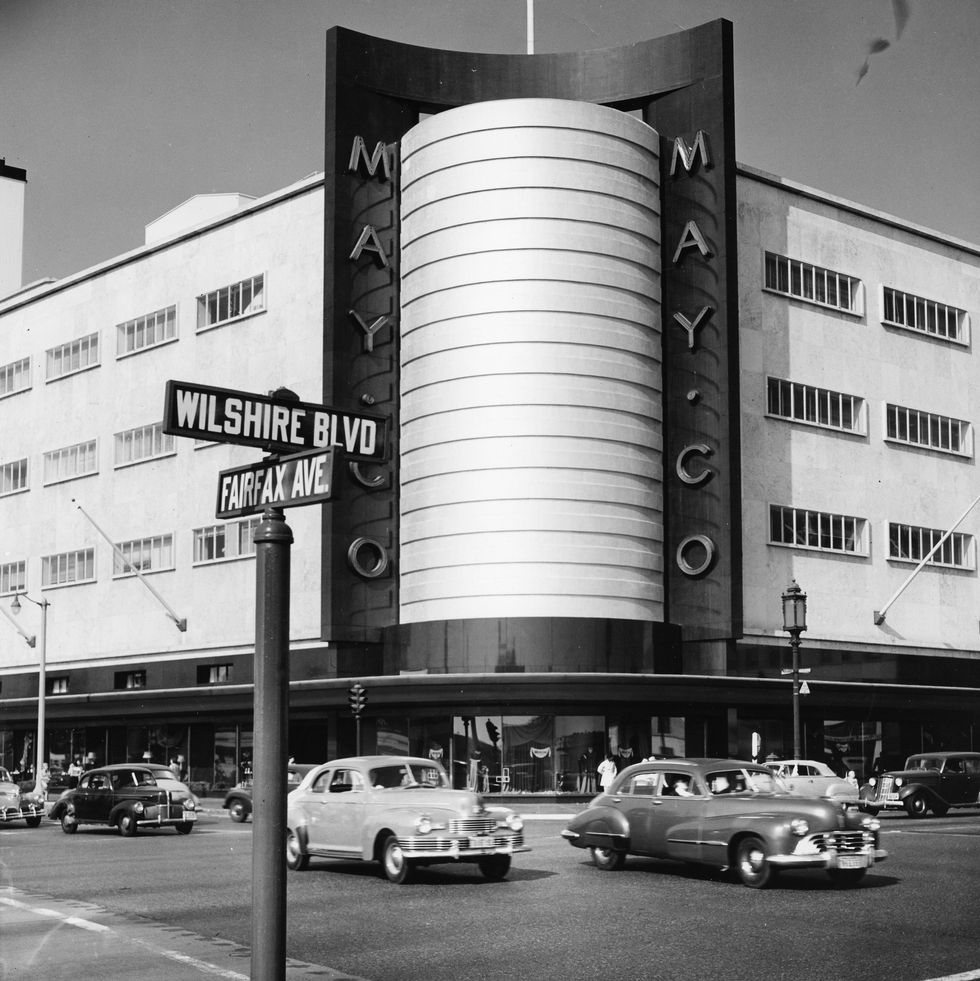 |
|
| (1940s)^ - Wilshire and Fairfax looking Northeast toward the May Co. Building. Photo courtesy of the Margaret Herrick Library |
Before and After
.jpg) |
|
 |
|
Historical Notes This striking building marks the western end of the 'Miracle Mile' in Los Angeles, a brand new concept in city planning for the 1920s, 30s, & 40s that centered around the automobile as opposed to the pedestrian. |
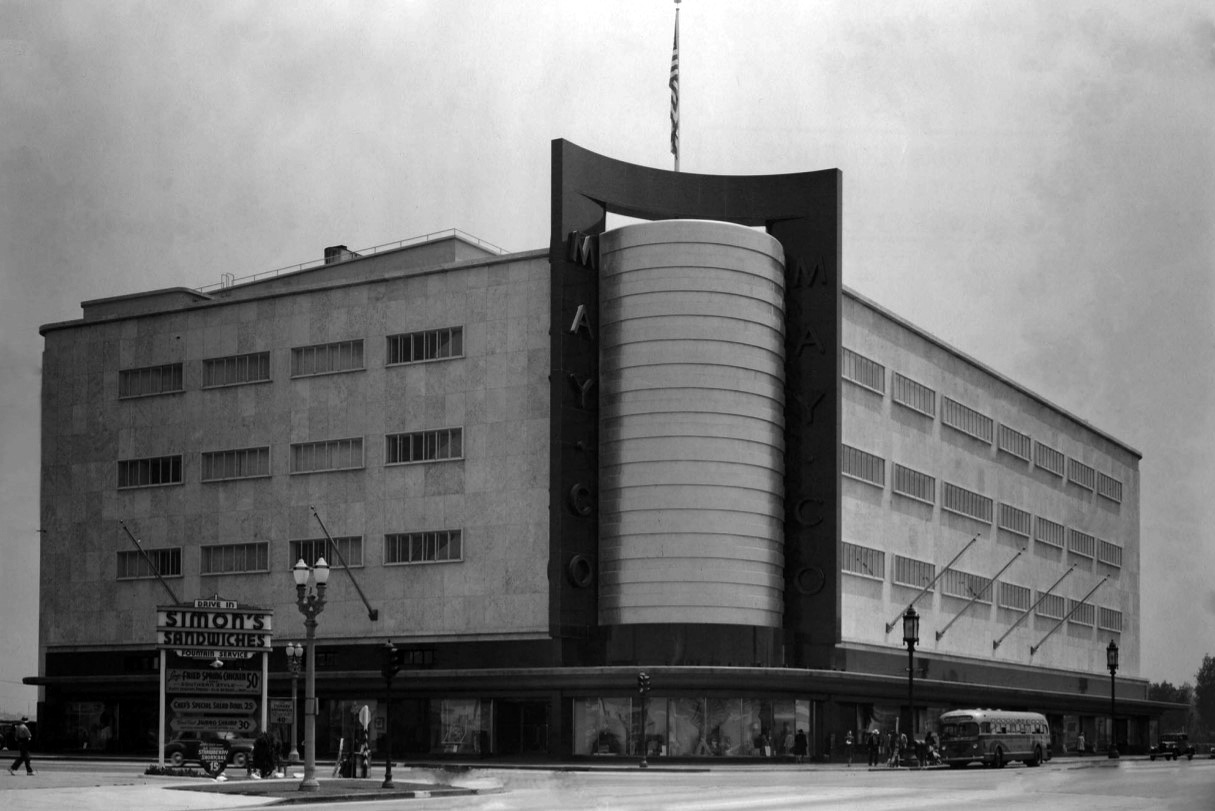 |
|
| (1941)* – The May Company Wilshire, Fairfax Avenue and Wilshire Boulevard. Architects: Albert C. Martin and Samuel A. Marx, Source: Bison Archives |
Historical Notes The iconic May Co. building was once the finest department store on the Miracle Mile and is most recognized by its predominant gold-tiled cylinder at the corner of Fairfax Avenue and Wilshire Boulevard. |
 |
|
| (ca. 1940)* - Exterior view of the May Co. Department Store, located on the northeast corner of Wilshire and Fairfax. A man appears to be standing on top of the May Co. sign. A sign across the street reads: Simon's Sandwiches |
Historical Notes When it opened, the gleaming May Company building was instantly heralded as the western gateway to the Miracle Mile, beckoning to motorists with an enormous gold-tiled cylinder at the corner of Fairfax Avenue. |
 |
|
| (1941)**^ - View looking toward the northeast corner of Wilshire and Fairfax where the beautiful May Company Department Store Building stands. |
Historical Notes May Company California was established in 1923 when May acquired A. Hamburger & Sons Co.(founded in 1881 by Asher Hamburger). The company operated exclusively in Southern California until 1989 when May Department Stores had dissolved Goldwater's, based in Scottsdale, Arizona and transferred its Las Vegas, Nevada store to May Company California.*^ |
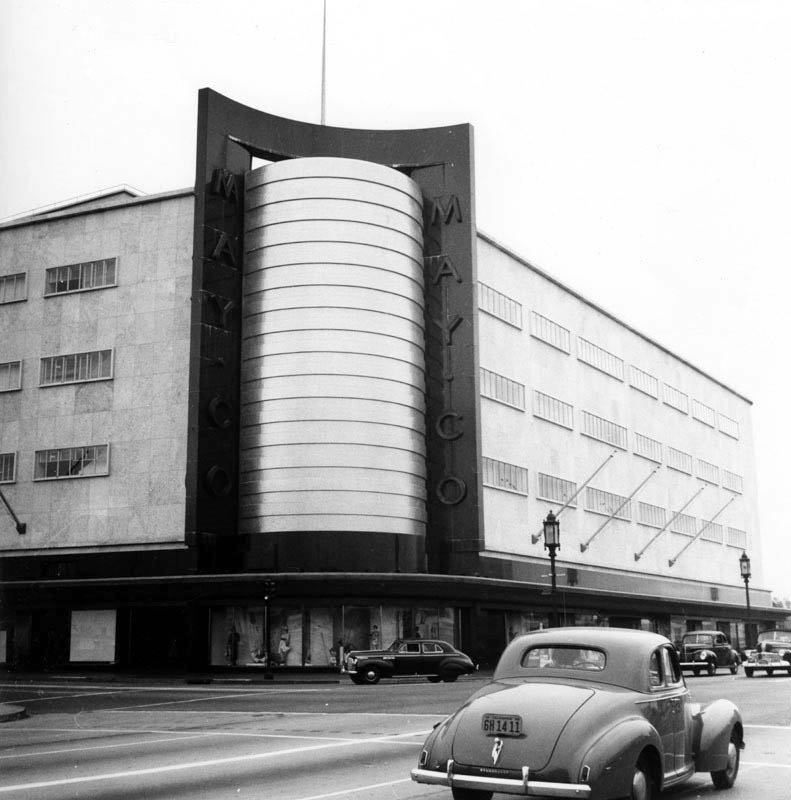 |
|
| (ca. 1940)* - Intersection of Wilshire Boulevard (foreground) and Fairfax Avenue, facing the distinctive corner gold tower of the Streamline Moderne May Co. department store. The store was built shortly before this photograph was taken. Photo by Ansel Adams |
.jpg) |
|
| (1940s)^.^ - View looking at the NE corner of Fairfax and Wilshire showing the May Company Wilshire building. |
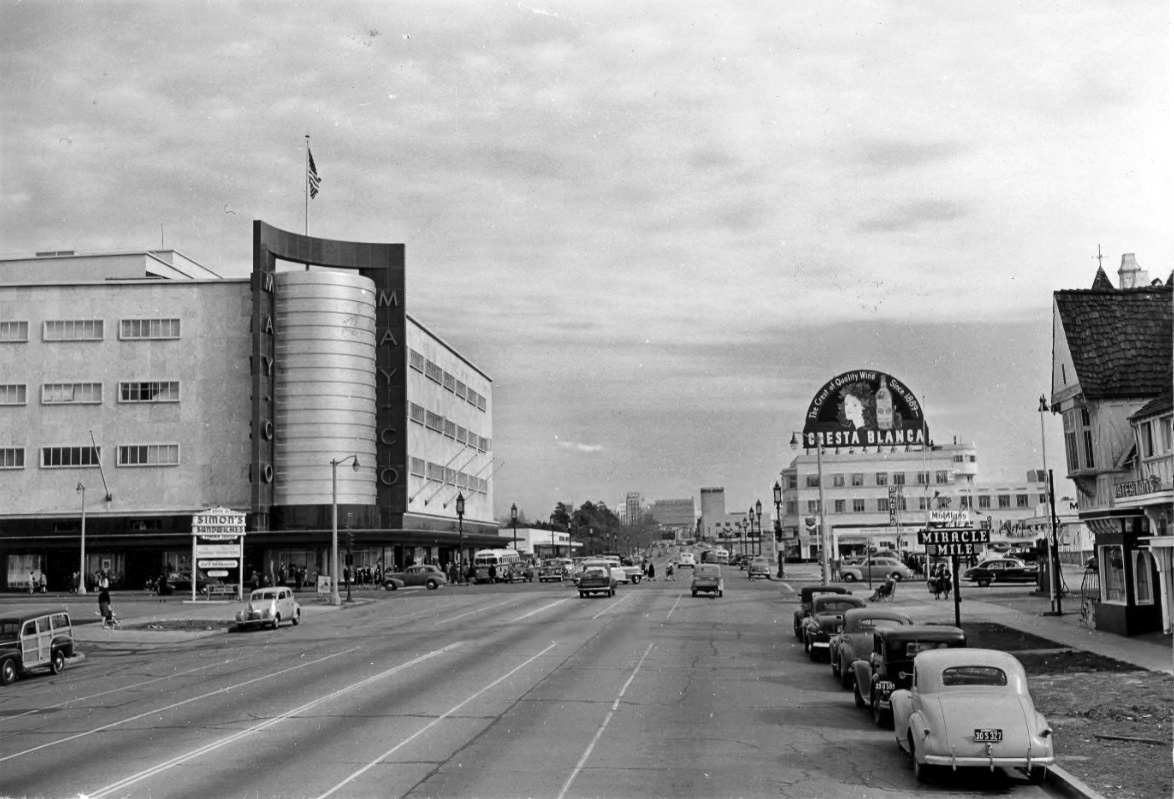 |
|
| (1947)** – View showing the start of the Miracle Mile at Wilshire and Fairfax with the Streamline Moderne May Co. department store on the NE corner. Courtesy of Pomona Public Library |
Historical Notes The iconic May Co. building was once the finest department store on the Miracle Mile and is most recognized by its predominant gold-tiled cylinder at the corner of Fairfax Avenue and Wilshire Boulevard. The Los Angeles Conservancy calls the May Co. Wilshire Building "the grandest example of Streamline Moderne remaining in Los Angeles". It is especially noted for its gold-tiled cylindrical section that faces the intersection of Wilshire Boulevard at Fairfax Avenue, of which it occupies the northeast corner.*^ In 1992, the building was designated LA Historic-Cultural Monument No. 566 (Click HERE to see complete listing). |
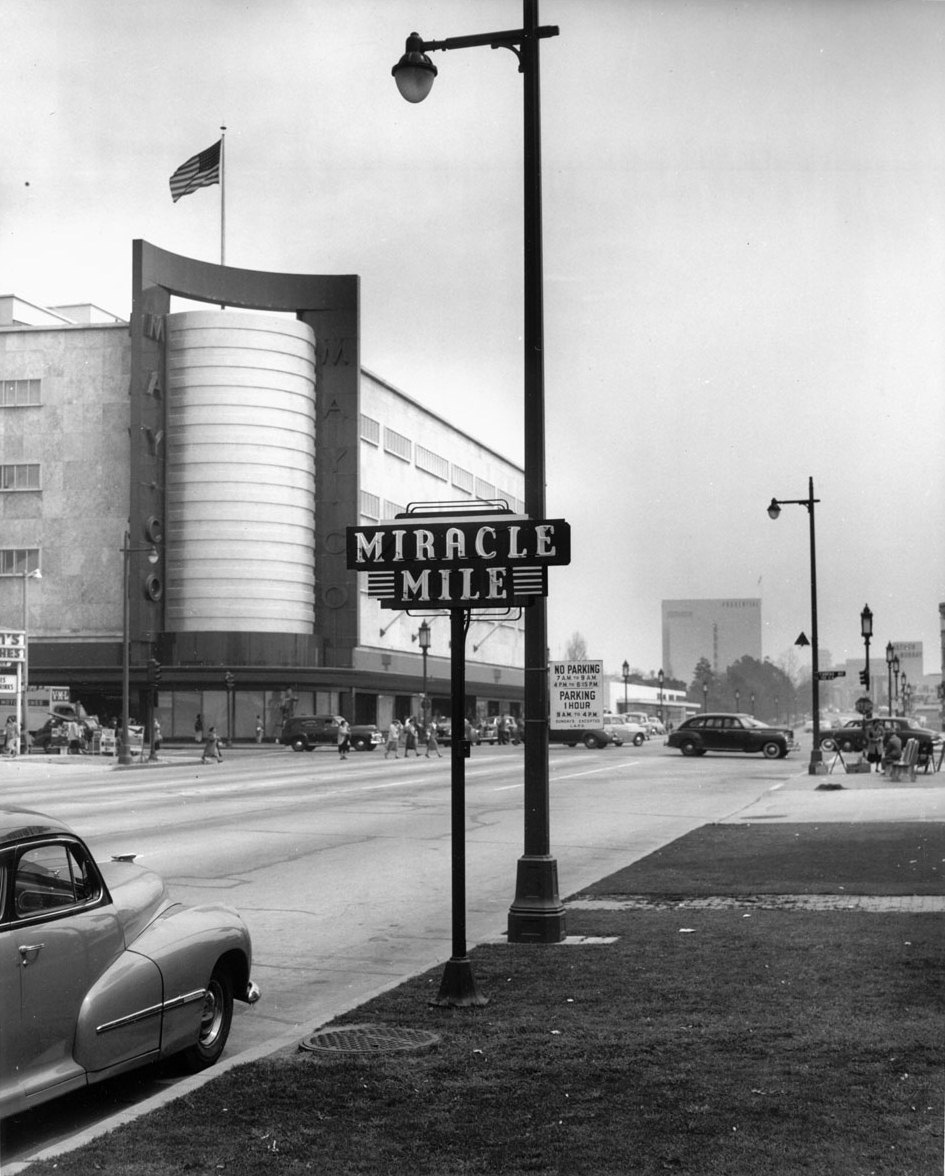 |
|
| (1948)^^ - View of the Miracle Mile and the May Co. building, looking east down Wilshire Boulevard. |
Historical Notes The Miracle Mile is an area in the Mid-Wilshire and Mid-City West regions consisting of a 1.5-mile stretch of Wilshire Boulevard between Fairfax and Highland Avenues. It sometimes also refers to the surrounding neighborhoods (including Park La Brea). The old May Co. building, now LACMA West, marks the western border of Miracle Mile's "Museum Row". Developer A. W. Ross saw potential for the area and developed Wilshire as a commercial district to rival downtown Los Angeles. Ross's insight was that the form and scale of his Wilshire strip should attract and serve automobile traffic rather than pedestrian shoppers. He applied this design both to the street itself and to the buildings lining it. Ross gave Wilshire various "firsts," including dedicated left-turn lanes and the first timed traffic lights in the United States; he also required merchants to provide automobile parking lots, all to aid traffic flow. Major retailers such as Desmonds, Silverwood's, May Co., Coulter's, Mullen & Bluett, Myer Siegel, and Seibu eventually spread across Wilshire Boulevard from Fairfax to La Brea. Ross ordered that all building facades along Wilshire be engineered so as to be best seen through a windshield. This meant larger, bolder, simpler signage; longer buildings in a larger scale, oriented toward the boulevard; and architectural ornament and massing perceptible at 30 MPH instead of at walking speed. These simplified building forms were driven by practical requirements but contributed to the stylistic language of Art Deco and Streamline Moderne. A sculptural bust of Ross stands at 5800 Wilshire, with the inscription, "A. W. Ross, founder and developer of the Miracle Mile. Vision to see, wisdom to know, courage to do."*^ |
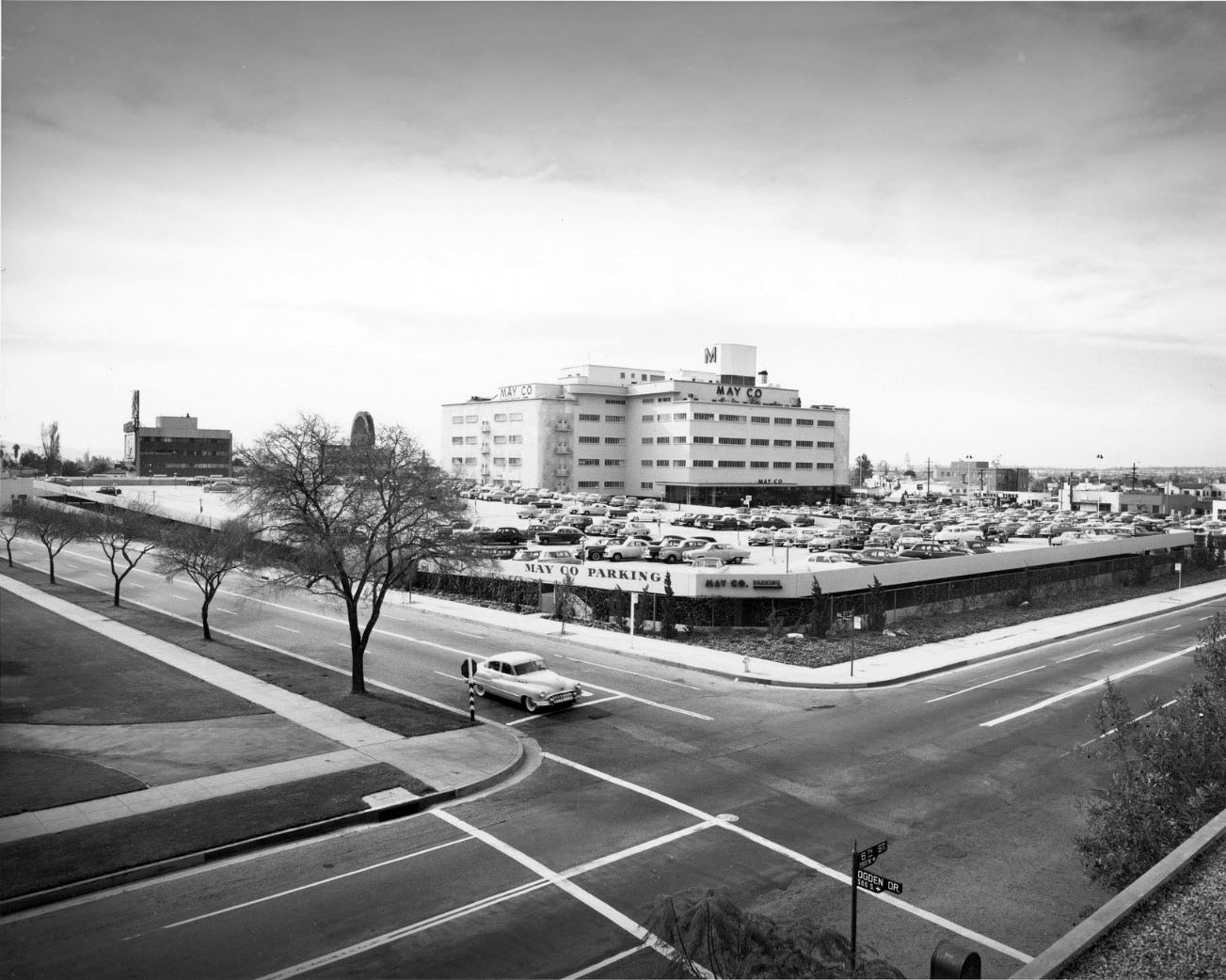 |
|
| (ca. 1953)**^ – View looking southwest from the intersection of 6th Street and Ogden Drive showing the May Co. and its multi-story parking structure. Also seen is the 5-storyh additon to the north of the original building. Photo by Julius Shulman via Getty Collection. |
Historical Notes The Original Building was constructed in 1939 as the May Company Wilshire department store and enlarged with a five-story 1946 Addition (seen above) to the North façade of the Original Building. |
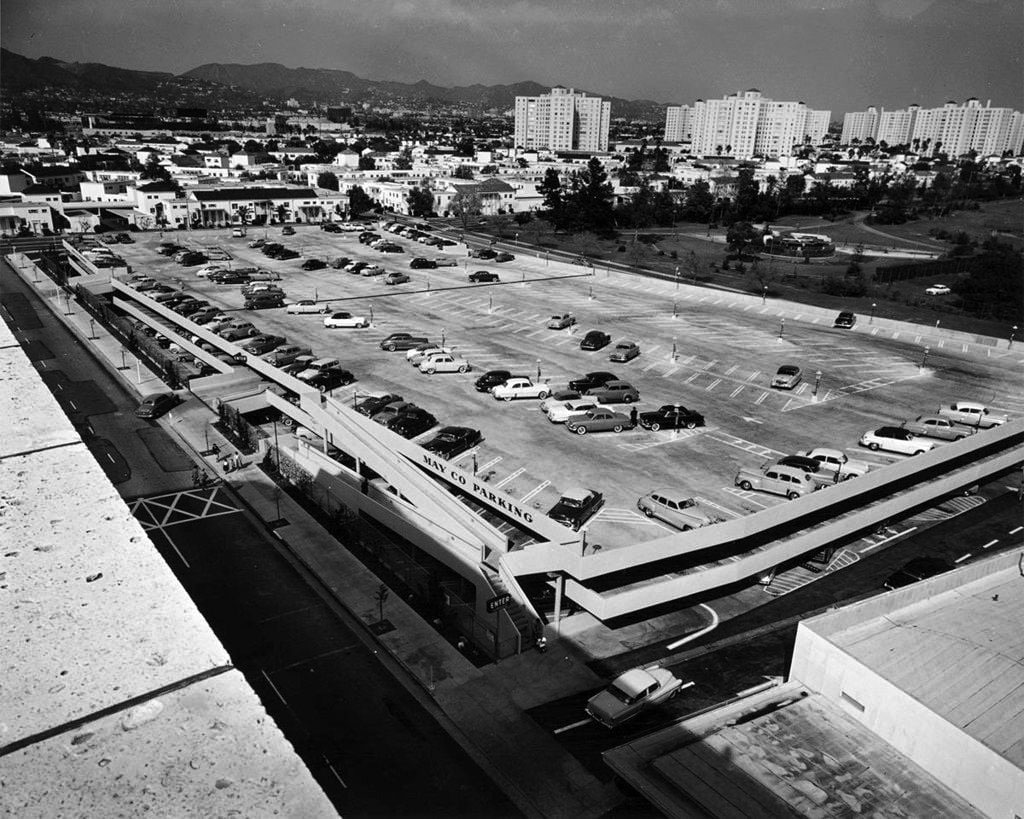 |
|
| (ca. 1953)**^ – View looking northeast from the roof of the May Co. Building showing multi-level store parking below, the Park La Brea Towers, and the Hollywood Hills in the distance. Photo by Julius Shulman via Getty Collection |
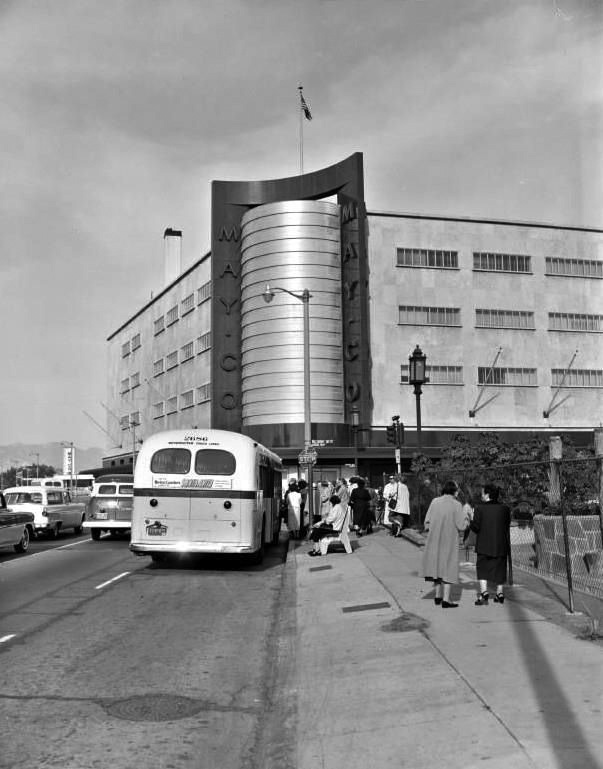 |
|
| (1950s)^.^ – A group of women get a bus stopped at the SE corner of Fairfax and Wilshire, probably on the way to the May Company Department Store, seen across the street. |
 |
|
| (1970)^ - View looking towards May Company from a northbound car on Fairfax Avenue at Wilshire Boulevard. On the right side is Ohrbachs Department Store, which opened in 1964 and closed in 1986. Photo Courtesy of Alison Martino, Vintage Los Angeles. |
Historical Notes Originally introduced by Ford in August 1968 as a package for the 1969 model year, the Mustang Mach 1 title adorned performance oriented Mustang offerings until the original retirement of the moniker in 1978, returning briefly in 2003 and 2004.^ Albert C Martin and SA Marx's 1939-40 May Company Wilshire was still bustling here, and by this time it even had its own gasoline station. Like most of the prominent stores on the Miracle Mile and the Wilshire District, the store's main entrance was in the rear, the easier to accomodate shoppers who parked their cars in the vast lots. In 1993 May Department Stores absorbed the venerable JW Robinson's chain, and so this store was shuttered in favor of the Beverly Hills Robinson's. Fortunately, it wasn't long afterward that the Los Angeles County Museum of Art annexed the building and took great care to preserve it. It is Los Angeles Historical-Cultural Monument No.566. In October 2011 the Academy of Motion Picture Arts and Sciences, in a joint project with LACMA, announced that the building would be the site for a new motion-picture museum. |
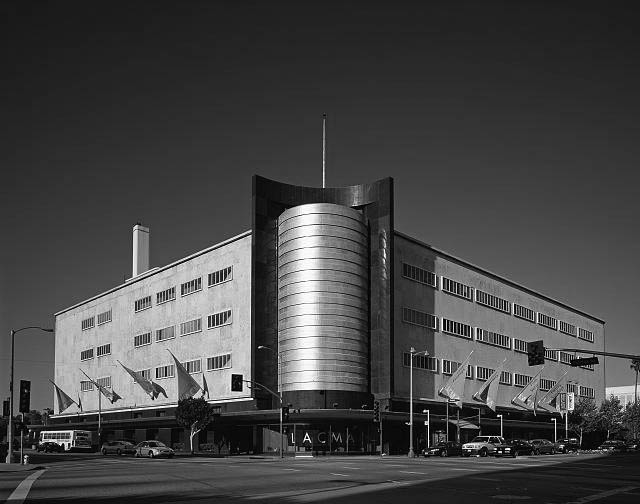 |
|
| (2009)*^ – View showing the former 1930s May Company department store - now part of the Los Angeles County Museum of Art. Photo by Carol Highsmith / Wikipedia |
Historical Notes In 1993, The May Company and Robinson’s were combined to form Robinson’s-May, which remained a premier upscale department store into the late 1990s. After the merger, many of the The May Company stores closed in Los Angeles, including The May Company Wilshire in 1992. In 2005, operational control of Robinsons-May stores was assumed by Macy’s West and stores were either sold or converted to Macy’s nameplate.* In 1994 the Los Angeles County Museum of Art (LACMA) acquired the building and, as "LACMA West", used it as exhibition space for the museum. |
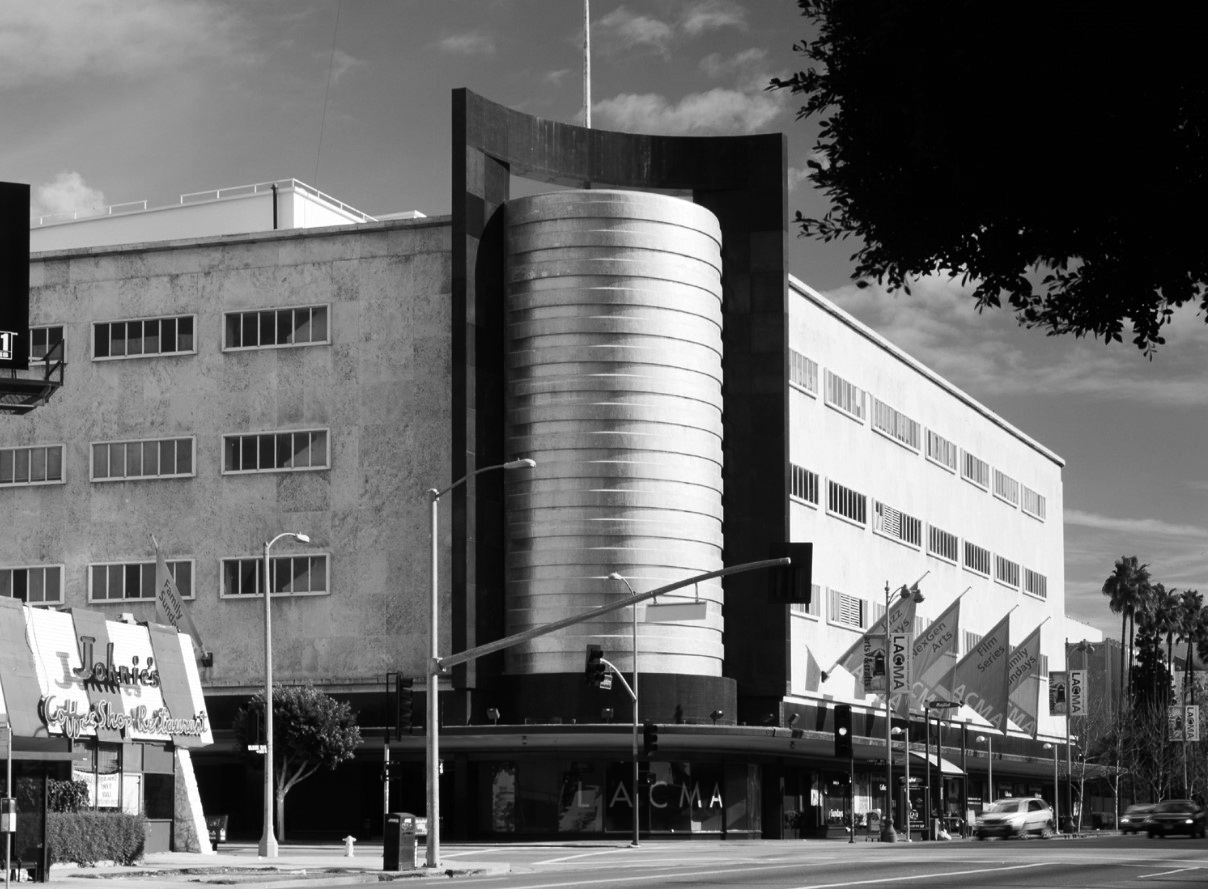 |
|
| (ca. 2010)^#^ - May Company/LACMA West with Johnie's Coffee Shop across the street. Photo by Tim Street-Porter |
Historical Notes In 2018, the historic May Company Building, a Los Angeles Historic-Cultural Monument, was renamed the Saban Building in honor of a $50M gift from Cheryl and Haim Saban and is undergoing an extensive restoration and renovation to accommodate the Academy Museum of Motion Pictures. The May Company/LACMA West Building/Saban Building is scheduled to be repurposed by 2020, at which time The Academy Museum of Motion Pictures is planning to move in. |
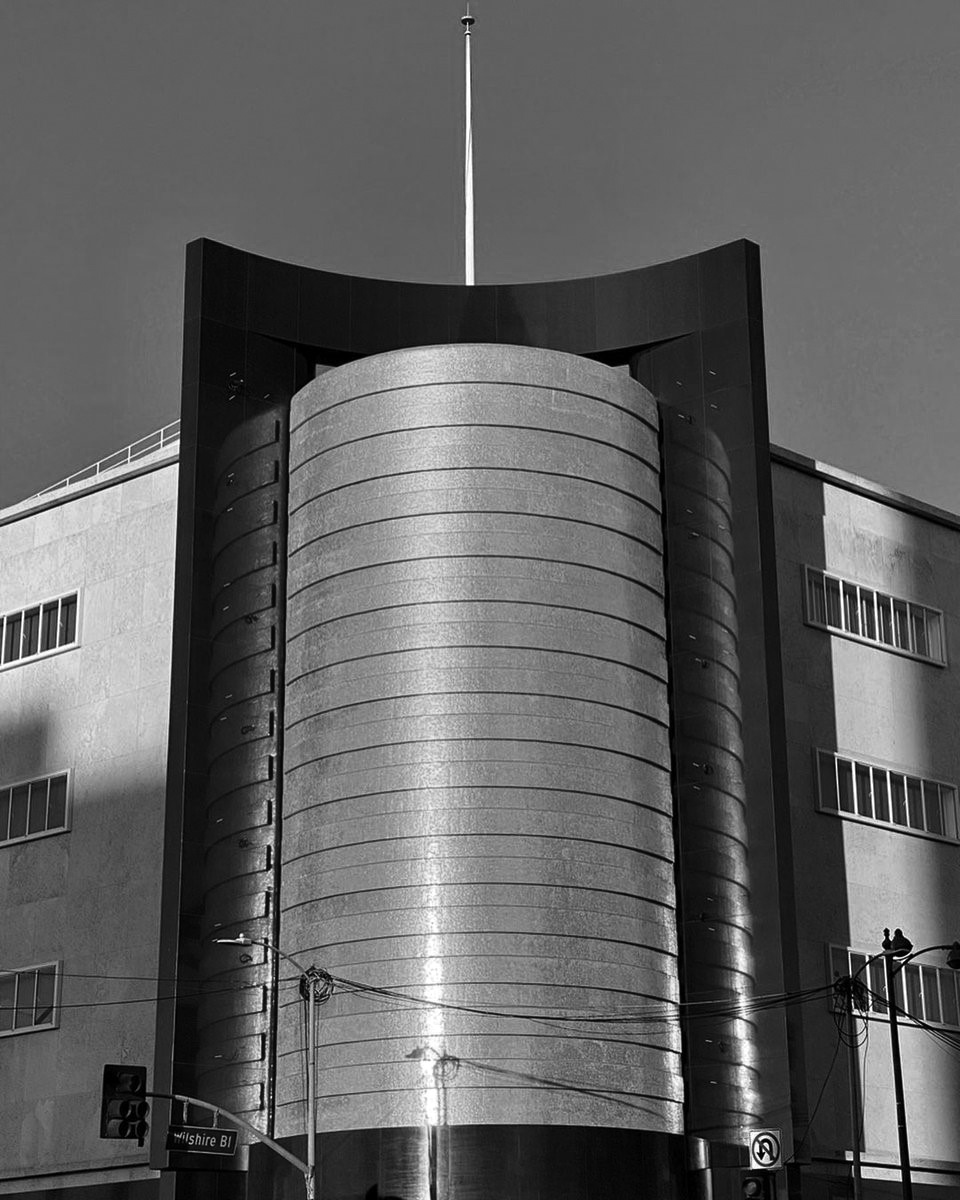 |
|
| (2020)^.^ - The May Company/LACMA West Building (aka Saban Building) being repurposed to become the Academy Museum of Motion Pictures. Photo courtesy of the Academy Museum of Motion Pictures |
Historical Notes The Academy of Motion Picture Arts and Sciences signed a long-term lease with LACMA and is converting the former original department store building into a museum dedicated to motion pictures. The rear addition (Albert C. Martin, 1946) will be demolished to make way for a 140-foot-diameter spherical addition of glass and steel. The project architects are Renzo Piano and Zoltan Pali.^ |
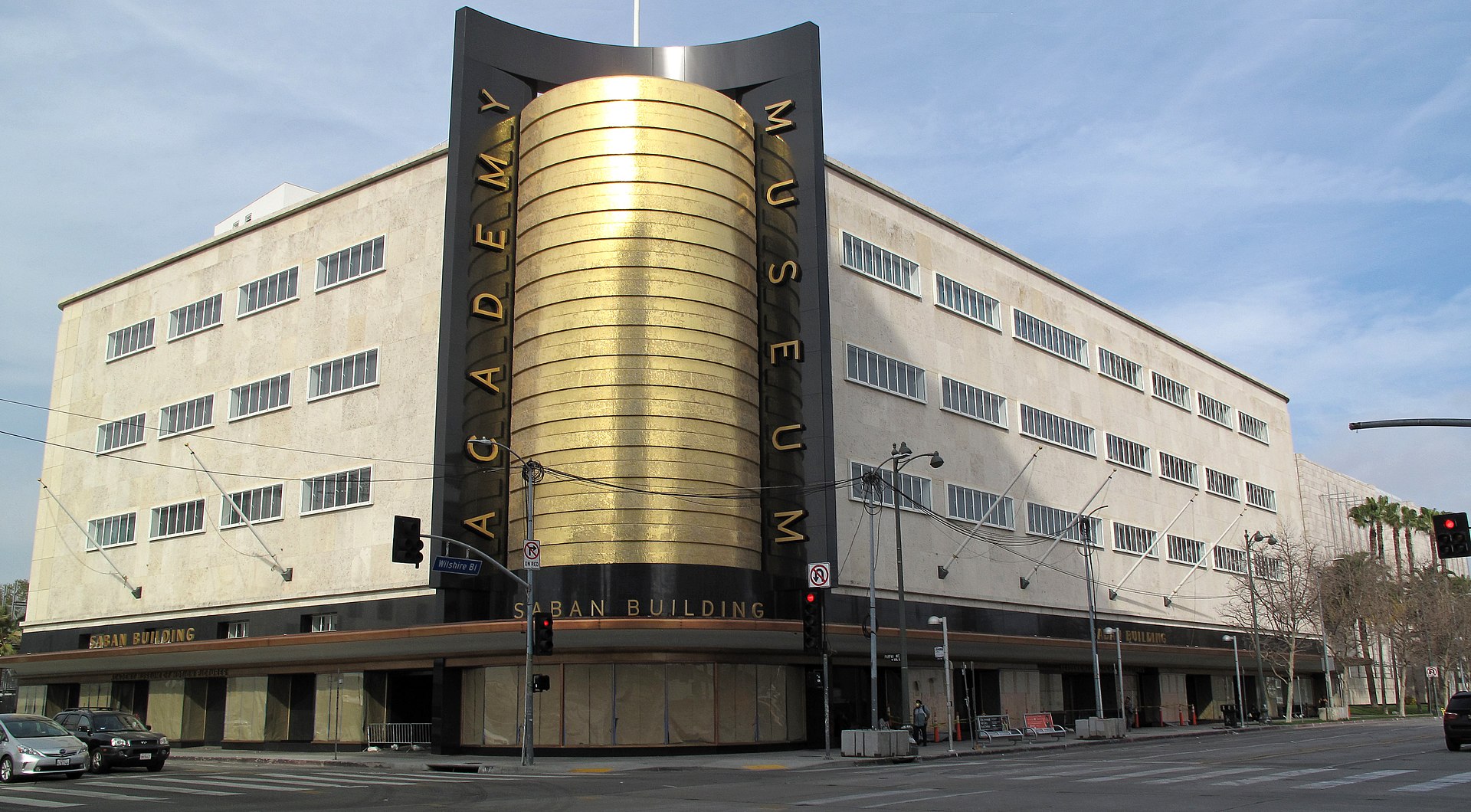 |
|
| (2021)*– View of the restored Saban Building (previously May Co. Building) which which today houses Academy Museum of Motion Pictures. Photo by Downtowngal / Wikipedia |
Historical Notes Opening on December 14, 2020 the Academy Museum will be the world's premier institution dedicated to the art and science of movies. Located on Wilshire and Fairfax in the heart of Los Angeles, the museum celebrates the past, present, and future of moviemaking. Designed by Pritzker Prize-winning architect Renzo Piano, the museum has restored and revitalized the historic Saban Building, formerly known as the May Company building (1939). The Saban Building's six floors contain expansive exhibition spaces, the 288-seat Ted Mann Theater, the Shirley Temple Education Studio, special event spaces, a cafe, and a store. A new spherical addition connected to the Saban Building via glass bridges features the state-of-the-art 1,000-seat David Geffen Theater and the rooftop Dolby Family Terrace with sweeping views of Hollywood. |
* * * * * |
|
Other Sections of Interest |
|
Water and Power in Early LA |
|
Newest Additions |
New Search Index |

A new SEARCH INDEX has been added to help navigate through the thousands of topics and images found in our collection. Try it out for a test run.
Click HERE for Search Index |
* * * * * |
< Back
Menu
- Home
- Mission
- Museum
- Major Efforts
- Recent Newsletters
- Historical Op Ed Pieces
- Board Officers and Directors
- Mulholland/McCarthy Service Awards
- Positions on Owens Valley and the City of Los Angeles Issues
- Legislative Positions on
Water Issues
- Legislative Positions on
Energy Issues
- Membership
- Contact Us
- Search Index
© Copyright Water and Power Associates
Layout by Rocket Website Templates